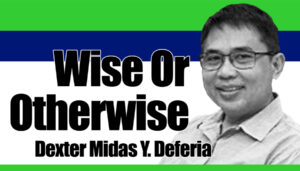The Department of Science and Technology-Philippine Institute of Volcanology and Seismology will spearhead the “Phivolcs InfoPress: Understanding and Communicating Kanlaon Volcano Hazards and DOST-Phivolcs Information Products” on Feb. 19 at the Provincial Capitol in Bacolod City.
A similar activity will also be held on Feb. 20 at the LDRRMD Operations Center, Capitol Area in Dumaguete City.
The seminar is designed for media and selected public information officers based in Negros Occidental and Negros Oriental to improve public understanding, preparedness, and response to volcanic hazards posed by Kanlaon Volcano.
DOST-Phivolcs recognizes the critical role of science and risk communication in ensuring that accurate, clear, and actionable information is relayed to the public before, during, and after a volcanic event.
The Phivolcs InfoPress will serve as a platform to help local audiences understand volcano-related terms and will also focus on presenting the specific volcanic hazards and eruption scenarios of Kanlaon Volcano.
“With Kanlaon Volcano being an active threat to the provinces of Negros Occidental and Negros Oriental, it is essential that both authorities and the public understand the risks involved and the necessary measures to take in the event of an eruption,” DOST-Phivolcs director Teresito Bacolcol said in a statement.
“By providing public information officers and the media with the tools to communicate effectively, we can help ensure that messages about volcanic risks and safety measures are clear, consistent, and easy for the public to understand,” Bacolcol added.
DOST-Phivolcs is partnering with several key institutions, namely the DOST I regions 6 and 7 and Negros Island Region, through the DOST Negros Occidental and Negros Oriental Provincial Science and Technology offices; the Philippine Information Agency VI and VII; the Department of the Interior and Local Government-NIR; the Office of Civil Defense (OCD) – VI and VII; and the provincial governments of Negros Occidental and Negros Oriental to strengthen science and risk communication, and improve the community’s resilience against volcanic hazards. ||




